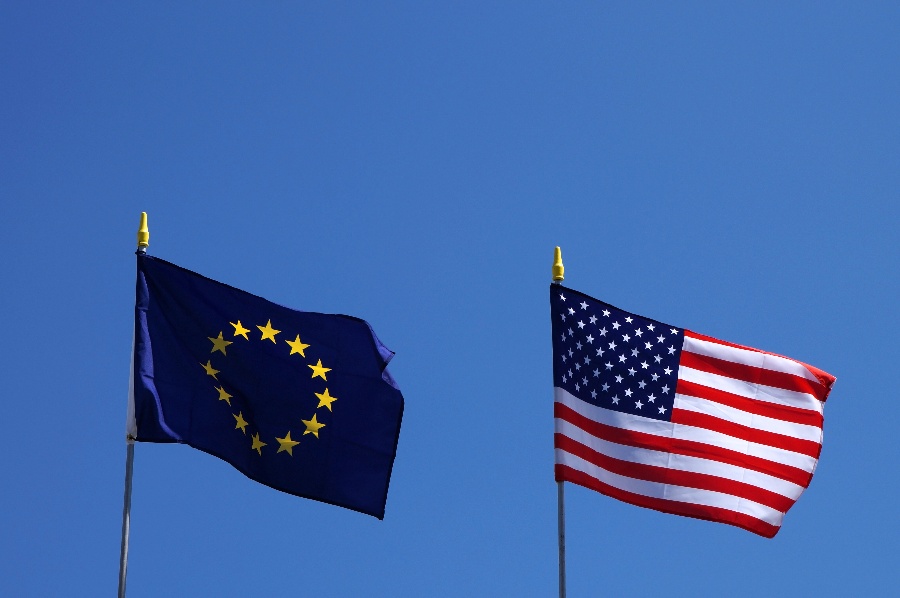US vs. Europe: Comparing Dock and Yard Management Markets

Dock and yard management are today's most in-focus parts of supply chain and logistics. Together, they bring methods to the madness of warehouse operations. Dock and Yard Management ensures efficient cargo handling, reduces vehicle turnaround times, and leads to timely deliveries and cost-effective operations.
While the concept and processes remain largely the same, subtle differences matter between different markets. While the economy size is different, the EU and the US are two mature markets when it comes to trade.
Both the United States and Europe aim for efficiency in their operations, as labor is expensive and difficult to hire and retain. However, their approaches differ significantly due to regulatory frameworks, cultural factors, infrastructure, and technological advancements.
Here, we will discuss key differences in dock and yard management between the US and Europe, helping you understand each region's unique aspects.
Dock and Yard Management in the US
The US dock and yard management market has seen phenomenal growth due to growing e-commerce activity. After COVID, shopping online became a norm, and this change in the trend fuelled e-commerce shipment volumes and the demand for quicker and more reliable deliveries. According to estimates, the yard management systems' worldwide dock and market size in 2024 is just USD 4.23 billion, reaching USD 9.2 billion by 2031 at a CAGR of 11.3%. The US market is projected to increase from USD 1.02 billion in 2019 to USD 1.72 billion by 2026, with a CAGR of 7.8%.
A significant trend in the US market is the growing usage of dock scheduling software. These systems manage vehicle and material flows in and out of a facility to minimize waiting times and improve efficiency. Several US companies also integrate dock scheduling software with other broader yard management systems to provide greater visibility into and control over their yard operations. Major US dock and yard management systems market players like C3 Solutions.
Dock and Yard Management in Europe
The European dock & yard management market has likewise developed quickly in recent years because of many of the same factors as the US market, especially the e-commerce trend and quicker delivery times. A study estimates that the European dock & yard management systems market will grow from USD 0.78 billion in 2019 to USD 1.32 billion by 2026 at a CAGR of 7.6%.
The greater emphasis on environmental impact and sustainability stands out as a crucial differentiation in the European marketplace. Increasingly, European businesses are seeking dock and yard management systems that could lessen their carbon footprint and enhance their environmental performance. This has resulted in features such as energy-saving equipment, renewable energy sources, and emission-reducing routing and scheduling.
Comparative Analysis
So, while we looked at the market size trends of these two major markets, that alone doesn't do justice. When comparing the dock and yard management markets in the US and Europe, there are several key differences:
1- Adoption Rates
In the US marketplace, dock and yard management technologies are widely adopted in the transport and logistics industries. This is likely because the US market places more focus on efficiency and cost reductions, and the regulatory framework is simpler. In general, the US has higher innovation and adoption of technology solutions. Combined with the large size of the economy and the mass resignations and driver shortages during and after COVID-19, the adoption of dock & yard solutions increased many folds.
In comparison, the European market has experienced slightly slower adoption because companies are forced to manage a far more complicated regulatory landscape and concentrate on environmental performance and sustainability.
However, adoption rates will likely increase as European businesses continue to embrace dock and yard management systems in light of labor shortages, especially truck drivers. Due to this change in workforce availability, companies are now looking to maximize asset sweating and minimize dwell times with a similar or even lower number of workers. This is possible only when aided with the right technology.
2- Technological Capabilities
The US dock & yard management market has historically been the most innovative technology characterized by real-time tracking, predictive analytics, and interoperability with other supply chains. This has enabled US companies to run their dock & yard operations more efficiently and with better visibility.
In Europe, the environmental and sustainability challenges have increased the interest in energy-efficient technologies and alternative energy sources. A few European dock and yard management systems also emphasize compliance with local standards and integrate worker safety features.
3- Regulatory Landscape
As mentioned earlier, the regulatory landscape in Europe is generally more complex than in the US, with a wide range of laws and regulations governing the movement of goods, the use of equipment, and the treatment of workers. This has required European companies to invest more resources in ensuring compliance with these regulations, which can sometimes slow the adoption of new technologies.
In contrast, the US regulatory environment is generally more streamlined, allowing companies to focus more on the operational and cost-saving benefits of dock and yard management technologies.
4- Workforce Management
In the US, workforce management in docks and yards relies heavily on unionized labor. This can lead to higher labor costs but provides a structured approach to labor relations and worker rights. Training programs are robust, focusing on safety, efficiency, and regulation compliance.
It's often a mix of unionized and non-unionized labor in European markets. There is a stronger emphasis on worker welfare and continuous professional development. Training programs in Europe include a broader focus on technology and sustainability, reflecting the region's regulatory and environmental priorities.
5- Cultural and Operational Differences
A fast-paced, high-volume approach characterizes the US dock and yard management culture. There is a strong emphasis on speed and efficiency, often driven by market competition and customer demands. Operational strategies are geared towards maximizing throughput and minimizing delays.
In Europe, the culture prioritizes precision and quality over sheer volume. There is a greater focus on collaborative logistics, where multiple stakeholders work together to optimize the supply chain. This approach often leads to more meticulous planning and execution, emphasizing reducing errors and enhancing overall service quality.
A World Bank report in 2021 showed that European ports have a higher customer satisfaction rate and better ranks than US ports, reflecting the difference in operational focus and service quality.
C3 Solutions: Closing the Gap
It may be tough to manage the often complicated problems of dock and yard management in various jurisdictions. Businesses require flexible and robust solutions, whether in the competitive, technology-driven US, precision-driven, or sustainability-driven Europe.
C3 Solutions understands these nuances and specializes in innovative dock and yard management solutions that fulfill all regional needs. We deliver SaaS solutions to optimize logistical requirements and lower costs. Our solutions seamlessly integrate with existing IT infrastructure while driving efficiency and sustainability with innovative technology.
Contact us today to discuss how C3 Solutions can improve your docks and yard.


